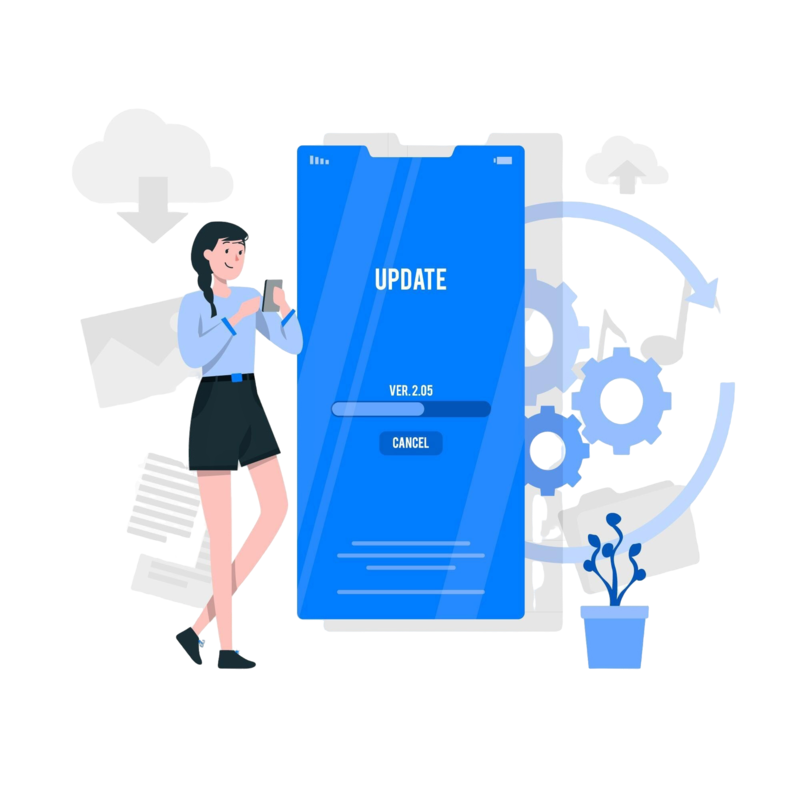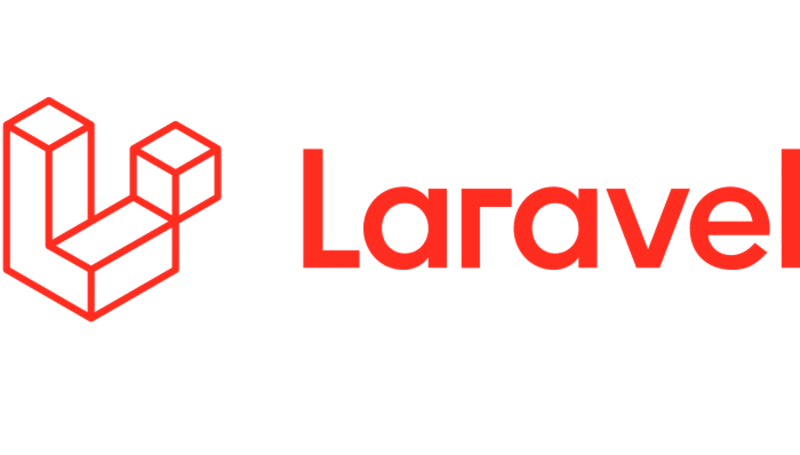Ever found yourself at a crossroads, uncertain about the right path to upgrade your Laravel application, when and how?
The journey to upgrade Laravel application to the latest version is fraught with challenges, and a misstep can lead to compatibility issues, unexpected functioning of features and a tangled web of debugging. Without a well-defined procedure, you might be grappling with downtime, security vulnerabilities, and the daunting task of aligning your existing codebase with the advancements in Laravel.
Our team’s proficiency at Mallow extends beyond mere technical know-how; we navigate the intricate landscape of Laravel development with a deep understanding of the framework’s evolving features and functionalities. With a keen eye on industry trends and best practices, we bring practical insights into when and how to upgrade Laravel applications effectively. With the help of this businesses gain not just a technical solution, but a strategic roadmap tailored to their unique needs. This approach ensures that every decision aligns with both current requirements and future innovations, fostering sustained growth and innovation.
After going through this article, you will gain invaluable insights into the complex decision-making process surrounding Laravel upgrades. You will emerge with a thorough understanding of the benefits of keeping your applications current, including access to cutting-edge features, enhanced security, and improved performance. You will also be well-versed in the potential challenges and considerations that accompany the upgrade journey.
When should you consider upgrading your Laravel application to the latest version?
-
- Your application’s security needs to be updated
-
- Your application is lacking the new feature enhancements
-
- Your application has compatibility issues
-
- You want to avoid technical debts
-
- You want your business to avail the advantages from the recent release
-
- You want your application to remain compliant
When might it not be necessary to upgrade versions of your Laravel application?

1.
2.
Please note that delaying the update of your Laravel application’s version due to resource unavailability is only advisable in cases, provided there are no issues with security, performance, or other critical factors.
3.
4.
What is the latest Laravel version? Introducing Laravel 10.

Laravel 10, the most recent release as of February 7, 2023, introduces a slew of enhancements that bolster the performance, security, and functionalities to enhance the efficiency of the application development process applications. Prior to Laravel 9, the framework adhered to a biannual release schedule. However, starting with Laravel 9, the creators opted for an annual release cadence. Notably, Laravel 9 was launched on February 8, 2022, and precisely one year later, Laravel 10 made its debut.
Key highlights of Laravel 10

Some notable highlights of Laravel 10 include:
1.
2.
3.
4.
5.
6.
7.
Laravel 10 has dropped support for 8.0x
Laravel 10 marks a significant milestone in the framework’s evolution, but it also comes with a notable change in terms of version support. With this release, Laravel has officially dropped support for Laravel 8.0, requiring a minimum PHP version of 8.1 to run effectively. This decision reflects Laravel’s commitment to staying at the forefront of modern web development practices and harnessing the latest capabilities of PHP.
This isn’t a new trend; Laravel has consistently strived to keep its applications updated with the latest features and enhancements. This approach has been followed in previous version releases as well, where older versions are phased out to make room for more advanced and efficient technologies, ensuring that Laravel applications remain at the forefront of web development. Laravel’s commitment to using up-to-date PHP versions is a testament to its commitment to performance, security, and innovation.
How to upgrade your Laravel application to the latest version
Below mentioned are the details about both approaches for upgrading your Laravel application from version 9.x to 10.x. Choose the method aligning with your project needs and desired level of control over the upgrade process.
Approaches for the Laravel upgrade
Upgrading a Laravel application can be approached in two main ways: manually or through automation tools like Laravel Shift. The manual approach involves identifying and resolving compatibility issues, adjusting deprecated code, and carefully updating dependencies step by step. On the other hand, an automated approach, such as using Laravel Shift, significantly streamlines the upgrade process. Shift automates the detection and correction of deprecated or incompatible code, making it faster and less error-prone. It also keeps up with best practices and Laravel’s evolving standards, ensuring a smoother transition to the latest version.
How to update the Laravel application using Laravel Shift?
-
- Step 1 – Visit the Laravel Shift website (https://laravelshift.com/) and sign up for an account if you haven’t already. Choose the Laravel Shift plan that corresponds to your current Laravel version and the version you want to upgrade to. You’ll need to purchase a plan for each version you’re upgrading through. Please note that jumping from Laravel 6.x directly to Laravel 10.x is not possible. You need to follow a phased approach, upgrading first from 6.x to 7.x, and then from 7.x to 8.x and so on. This stepwise transition ensures a smoother and more manageable upgrade process, allowing you to address compatibility concerns.
-
- Step 2 – After purchasing, you’ll receive an email with instructions on how to access it. You can also access your Shift from your Laravel Shift dashboard. Follow the on-screen instructions to configure your Shift. You’ll need to provide access to your Git repository where your Laravel application is hosted. Laravel Shift will change your codebase, so granting access is necessary. Before updating your Laravel application’s version using Laravel Shift, it’s essential to ensure that the branch, which will undergo the update, is in a stable and working state. This preparation guarantees a smooth and successful transition to the latest Laravel version, reducing the likelihood of compatibility issues and unexpected errors.
-
- Step 3 – Once configured, initiate the Shift. Laravel Shift will analyse your application, identify upgrade tasks, and generate a pull request with the necessary code changes. Laravel Shift will create a pull request in your Git repository. Review the changes carefully to ensure they align with your application’s requirements and functionality.
-
- Step 4 – After merging the pull request, test your Laravel application to ensure that it functions as expected with the new Laravel version. If you encounter issues during testing, use Laravel’s error messages, log files, and debugging tools to identify and resolve problems. Consult Laravel Shift’s documentation and support resources for assistance with any Shift-specific issues.
How to update your Laravel application manually?
Upgrading your Laravel application to the latest version involves several steps to ensure a smooth transition. Here’s a general guide on how to upgrade your Laravel application:
-
- Step 1 – Start by checking the official Laravel documentation for the latest version. It provides detailed release notes and upgrade guides specific to each release. Before making any changes, back up your entire application, including the database, codebase, and configuration files. This ensures you can restore your application if anything goes wrong during the upgrade process.
-
- Step 2 – In your project directory, open the terminal/command prompt and run composer update to update your project’s dependencies, including Laravel. In your composer.json file, update the Laravel version to the latest one in the “require” section. After making this change, run composer update again to update to the specified Laravel version.
-
- Step 3 – Check your application’s configuration files in the config/ directory for any changes or additions specific to the new Laravel version. Update your own configuration settings as necessary. Ensure that any third-party packages and dependencies used in your application are compatible with the new Laravel version. Consult their documentation or repositories for information on compatibility. Review your application’s codebase for any deprecated or removed features, methods, or functions. Laravel’s release notes will highlight these changes. Modify your code to align with the latest Laravel conventions and practices.
-
- Step 4 – Check your database migrations and seeders for compatibility with the new Laravel version. Run php artisan migrate and php artisan db:seed to apply any necessary database updates. After making codebase and configuration updates, thoroughly test your application to ensure it functions correctly. Pay close attention to any features or functionality that might be affected by the upgrade. If you encounter issues during testing, use Laravel’s error messages, log files, and debugging tools to identify and resolve problems. Utilise resources like Laravel’s GitHub repository, forums, and community support for assistance.
Check out this guide from Laravel for detailed insights to upgrade your application to the latest version.
- Step 4 – Check your database migrations and seeders for compatibility with the new Laravel version. Run php artisan migrate and php artisan db:seed to apply any necessary database updates. After making codebase and configuration updates, thoroughly test your application to ensure it functions correctly. Pay close attention to any features or functionality that might be affected by the upgrade. If you encounter issues during testing, use Laravel’s error messages, log files, and debugging tools to identify and resolve problems. Utilise resources like Laravel’s GitHub repository, forums, and community support for assistance.
Testing and Deployment
-
- Step 1 – After updating your Laravel application with Laravel Shift, it’s crucial to run unit tests to ensure that the core functionality of your application remains intact. Unit tests validate individual components, functions, and classes to identify any regressions or issues introduced during the upgrade. This step helps maintain code quality, as it catches errors early in the development cycle, enabling prompt bug fixes and ensuring the stability of your application.
-
- Step 2 – While automated testing, including unit tests, plays a significant role, manual testing is equally essential. It involves systematically exploring your application to verify that all features, user interfaces, and functionalities work as expected. During manual testing, you can perform end-to-end testing, assess the user experience, and identify any edge cases or issues that automated tests might miss. This step ensures that your application is not only technically sound but also provides a seamless and user-friendly experience.
-
- Step 3 – Once your Laravel application passes both unit tests and manual testing, it’s time to deploy the updated version to your production environment. Deployment involves updating the configurations based on the latest version and moving the latest code, making the updated application accessible to users. It’s crucial to follow best practices for deployment to minimise downtime, ensure data integrity, and maintain a smooth transition. Additionally, consider setting up monitoring and backups to respond quickly to any issues that may arise post-deployment, ensuring a reliable and responsive application for your users.
Want to know more details about Laravel shift? Check out this FAQ section from Laravel shift for detailed insights.
How to upgrade application from Laravel 9.x to 10.x?
Commencing to upgrade your Laravel application from version 9.x to 10.x opens avenues for enhanced features and optimisations. A swift and efficient method involves leveraging Laravel Shift, a dedicated service that automates the upgrade process seamlessly.
Once you initiate the upgrade process with Laravel Shift it will provide you the pull request ready for review which you can merge after the review. This automated approach ensures a faster transition with reduced manual intervention. Check out this piece of information from Laravel Shift on how to upgrade your Laravel upgrade from version 9.x to 10.x.
Alternatively, a manual approach involves carefully reviewing the Laravel upgrade documentation, understanding the version-specific changes, and manually implementing them in your codebase. Regardless of the method chosen, thorough testing is paramount to ensure the compatibility and functionality of your application in the upgraded Laravel environment. The decision between automated and manual methods often hinges on project complexity, customisation needs, and the desired level of control over the upgrade process. For more details, checkout this article from Laravel on upgrading to 10.x.
Maintaining high code quality of your Laravel application
By now, you should understand the latest enhancements introduced in the recent Laravel upgrade and how they can benefit your projects. It’s essential to emphasise the importance of maintaining top-notch code quality in your application. These upgrades not only enhance the functionality and capabilities of your software but also streamline the development process.
Hence, it’s vital to prioritise clean and well-structured code to ensure your application’s long-term performance, security, and scalability, aligning with the latest Laravel features.
Maintaining high code quality in a Laravel application is crucial for several reasons. First and foremost, it directly impacts the application’s reliability and stability. Well-structured and clean code is less prone to bugs and errors, making it easier to maintain and update over time. High code quality also enhances collaboration among development teams, as clean and well-documented code is more understandable and shareable.
Moreover, it helps in scaling the application efficiently as a solid codebase is easier to extend and adapt to changing requirements. It also reduces technical debt, saving time and resources in the long run. Check out this article on validating your Laravel application’s code quality for detailed insights.
Still unsure about your next step? Feel free to reach out to our team.
Your queries, our answers
Yes, we can continue developing your existing Laravel application. Please provide the current project details so we can assess and proceed. For more details, get in touch with our team.
No, we focus on custom Laravel solutions tailored specifically to your needs. We do not offer pre-built, off-the-shelf products.
Yes, we develop Laravel applications for various domains, including e-commerce, healthcare, finance, and more.
The cost varies based on the project's complexity and scope. For a basic MVP, costs generally range from $20,000 to $40,000 for web apps and $10,000 to $25,000 for mobile apps. For more advanced applications, costs can be higher. We offer a detailed cost breakdown tailored to your specific needs. To know more, check out our article on How much does it cost to work on a Laravel project with Mallow? and discover how we can build a strong partnership together.
The timeline depends on the project's complexity. A basic project may take a few weeks, while more complex applications could take several months.
Yes, we can align our working hours with your time zone to facilitate effective communication throughout the development process. For more details on how you can handle timezone differences efficiently, do check out our article on how to handle timezone differences while working with an offshore development team.
Mallow offers the following outsourcing models: Project-based outsourcing, Staff augmentation, & Dedicated development team (DDT)
Yes, we offer maintenance and support services to ensure your Laravel application remains up-to-date and functional.
Yes, you will own the intellectual property rights of your Laravel application upon project completion. Check out our article on why owning intellectual property rights while outsourcing your application is important.
The cost is influenced by several factors including the complexity of the project, the number of features required, and whether the application is for web or mobile. We provide a personalized estimate based on your project details.
We work with the latest stable versions of Laravel and can also support older versions if needed based on your project requirements. For more details check out our article on Laravel upgrade: when and how to transition to the latest version
Yes, we offer post-deployment support to address any issues and provide updates as needed.
To hire a Laravel developer from Mallow, you can contact us with your project requirements. We'll discuss your needs, suggest suitable developers or teams, and provide you with a proposal. Once the terms are agreed upon, we can start the development process.
Yes, you can hire a dedicated Laravel developer or a team of developers from Mallow. This allows you to have a dedicated resource working exclusively on your project, providing more control and flexibility over the development process.
To hire the right laravel developer for your project, check out this article on tips to hire the right Laravel developer.
Author
Anandhan
Anandhan is a passionate technical lead at Mallow, where he plays a crucial role in driving innovation and overseeing the development of cutting-edge solutions. With a wealth of experience in the field of technology, he consistently strives to elevate his team's performance and deliver exceptional results. His multifaceted interests inspire him to approach challenges with creativity and an open mind, leading to innovative solutions that transcend conventional boundaries. Beyond his professional endeavours, Anandhan nurtures a love for literature and cinema. During his free time, you'll often find him engrossed in the pages of books across various genres, exploring diverse narratives and gaining insights from authors around the world.



